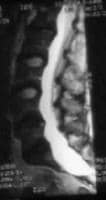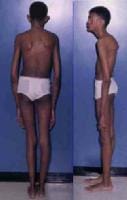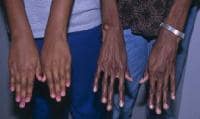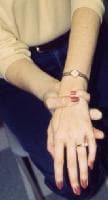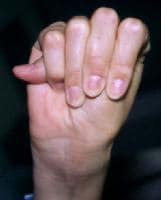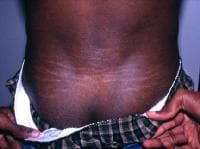Article by Sanya Jain
Yes, I know. It sucks that you have to wake up early as it is, for school, for office, without having to go for a walk too! But trust me when I say that if you could just put the laziness aside and go for a morning walk every day, your body and your mind will thank you. How so? Read ahead to find out.
10- Better Day
“An early morning walk is a blessing for the whole day” said Henry David Thoreau. And how right was he! Starting your day with a brisk walk, or even a leisurely stroll around the neighbourhood has many benefits. It gives you a natural energy boost and you feel revitalized. Physical activity early in the morning is helpful because it ensures greater mental sharpness for the rest of the day. You also feel more active and fresh throughout the day, as opposed to when you feel lethargic because you wake up late. The temperature during the morning is conducive to exercising, with no sun to bother you. Moreover, you can use the time to plan out the rest of your day, allot a specific time to each task you plan to accomplish and sketch a schedule to follow.
9- Better Sleep
A brisk walk early on in the morning ascertains that you sleep better at night. In a previous article of mine (Ten Ways to Sleep Quickly and Easily at Night), I have mentioned how physical activity during the day helps one sleep better at night. The same logic holds true here. Walking tires the body out and therefore, sleep comes easily when you hit the pillow at night. In fact, daily morning walks also help to regulate your sleep cycle as you get up at the same time every day. Brain scans have even proved that exercise early in morning helps a person spend almost 75% more time in deep sleep, in contrast to exercise done later in the day.
8- Reduces Risk of Cancer
The right kind of lifestyle can go a long way in making sure that your risk of developing cancer is lowered. Morning walks are a form of exercise, which, if undertaken regularly can lower cancer risks. A study by the National Cancer Institute found that walking briskly for one hour every day for most of the week significantly reduces breast cancer risk in middle aged women. Another study found that walking improves breast cancer survival rates. Fast paced walks also help to reduce the risk of colon cancer by ensuring that carcinogens do not stay in prolonged contact with the intestinal lining of the body, according to a study published in 1999. Moderate exercise in the form of regular morning walks have been shown to reduce the risks of endometrial cancer. It is clear then that morning walks can help prevent the onset of cancer in the body, so wake up before it is too late.
7- Weight Loss
If you are obese or overweight, a morning walk can be very beneficial for you. Morning walks burn calories and improve the metabolism of the body. Both these processes are essential to lose weight. Go for a walk first thing in the morning, preferably before breakfast to improve your body’s metabolism. You can burn up to 100 kcal of energy every one mile you walk. Morning walks are more beneficial to the process of weight loss because in the morning, the glucose level of the body is low which means that it is the fat which burns. In the evening, when the glucose level is high, walking burns the glucose and reduces blood sugar level.
6- Diabetes and Hypertension
Walking is a form of exercise. Exercise burns glucose. Burning of glucose results in more utilization of insulin. This in turn improves blood sugar levels and help diabetics. Simple. Morning walks don’t just help patients manage their diabetes, they also prevent the onset of diabetes in healthy people. Walking 10,000 steps a day increases insulin sensitivity and reduces the Body Mass Index by one percent. In India, almost 51 million people suffer from diabetes. Morning walks can help prevent and control this disease. Walking lowers high blood pressure by improving blood flow in the body. Blood pressure control helps against hypertension. Walking just 20 to 30 minutes every day has a suppressing effect on hypertension. To keep these two diseases at bay, walk away.
5- Muscular Strength
Daily walks help improve muscular strength in the body by keeping the muscles in regular use. The muscles which benefit the most are in the calves, glutens, hamstrings, legs and arms. Walking tones the muscles of the thighs, arms, forearms, buttocks and legs. The shapely legs of people who walk regularly are a result of their toned calves. Moreover, walking doesn’t just build muscles but also helps in muscle endurance. This means that people who walk every morning can engage in physical exertion for a longer period of time without feeling tired. Ever notice how people who don’t engage in a lot of regular physical activity tire so easily? That is because they have low muscle strength and endurance. If you hate vigorous exercising but want to stay fit, going for a morning walk daily is an excellent substitute. This regular, moderate form of exercise ensures better muscle strength and endurance.
4- Brainpower
A quick paced walk right in the morning guarantees that you stay alert throughout the day. Along with your body, it energizes your mind as well. Walking improves blood circulation which means that a greater amount of oxygen reaches the brain. This leads to improved mental faculties and better powers of recollection. Researchers at the University of California, San Francisco even found out that age related mental decline is lower in people who walk daily. It also lowers the risk of Alzheimer’s and dementia in elderly people. But most importantly, exercise produces brain-derived neurotrophic factor : a protein that perks up mental acuteness. So put on the walking shoes every morning and walk your way to better mental health.
3- Overall Health
Besides the major ways in which diabetes helps improve health, here are some more advantages of talking a morning walk every day-
- Raises good cholesterol HDL levels in blood
- Lowers LDL or bad cholesterol levels
- Prevents and protects against miscarriages
- Muscular development combats back pain
- Is a standard treatment for osteoporosis patients
- Boosts the immune system
- Strengthens the joints
- Better sexual health
2- Less Stress
As mentioned earlier as well, morning walks are beneficial not only to the body but to the mind as well. Walking helps a person deal with stress and combat anxiety. The psychological health of a person thus benefits greatly from walking, and even helps provide a positive outlook to the whole day, first thing in the morning. Morning walks have been shown to improve self esteem, which in turn helps fight various psychological ill effects like depression (one major cause of depression being low self esteem) If you stick to your resolve and walk regularly ever morning, it will lead to better overall mood and fight mild depression. Various studies have proven that walking helps reduce the anxiety and depression. The regular rhythm of breathing while walking, the sensory distractions it provides, the release of pent up energy etc all contribute to enhance psychological well being. The release of endorphins provides a natural ‘high’ and improves mood. While walking is of course no substitute for medicines and treatment, it does help a person cop with psychological stress better.
1- Cardiovascular Health
If this does not push you into waking up early for a walk, I don’t know what will. The health benefits of taking a morning walk everyday are immense, the most important one being that it is good for your heart. In a world where approximately 40% of the population suffers from heart diseases, as little a change in your lifestyle as going for a morning walk every day can be helpful to keep the diseases at bay. Studies have shown that walking briskly, at 3 to 4 miles per hour, can decrease your risk of heart disease by 40%! Since physical inactivity is a major reason for heart diseases, walking ensures that your heart stays fit. The heart is an organ which is strengthened by regular activity which helps it pump blood better. Walking daily has also been shown to lower the risk of a second heart attack in people who have already suffered from one. The physical activity of walking is instrumental in improving blood circulation in the body, strengthening the heart, increases the heart rate and generally promotes better cardiovascular health. Morning walks thus reduce the chances of cardiac arrests and strokes. So stop hitting the snooze button and wake up every morning to take a walk. Your heart will thank you.
























